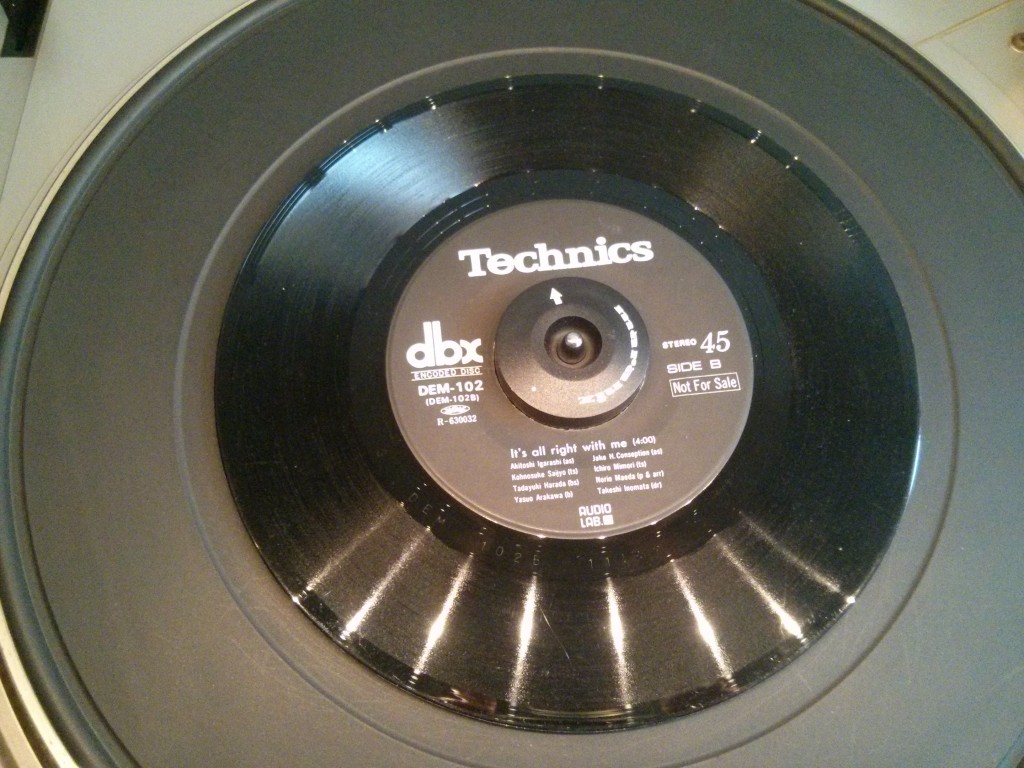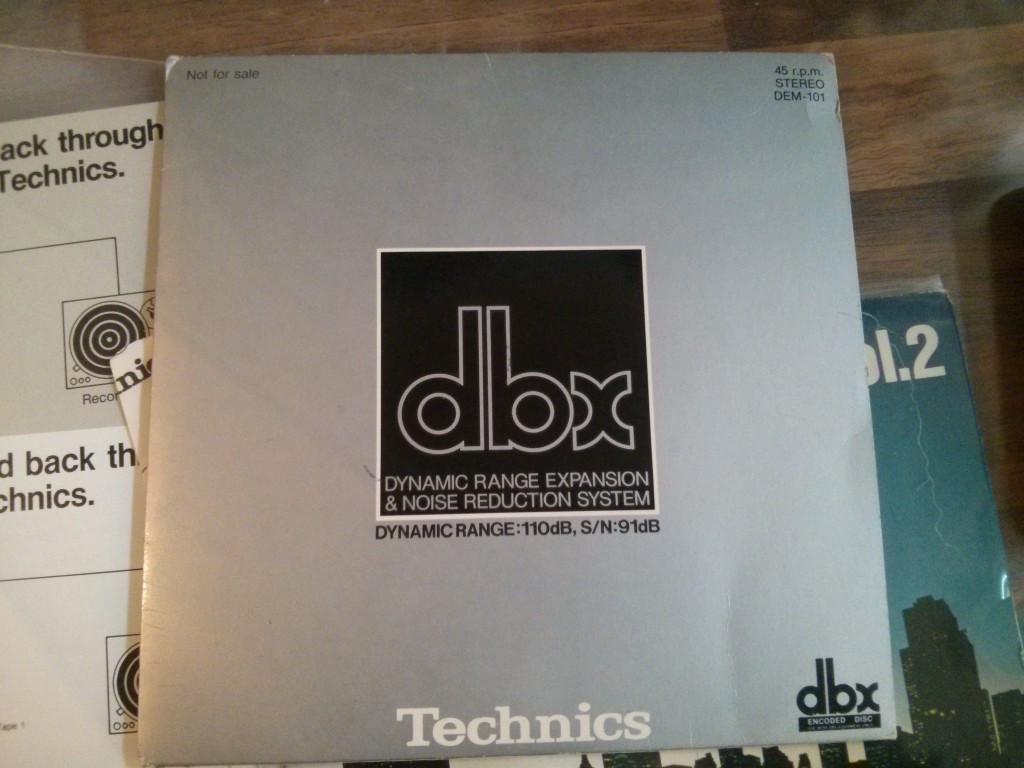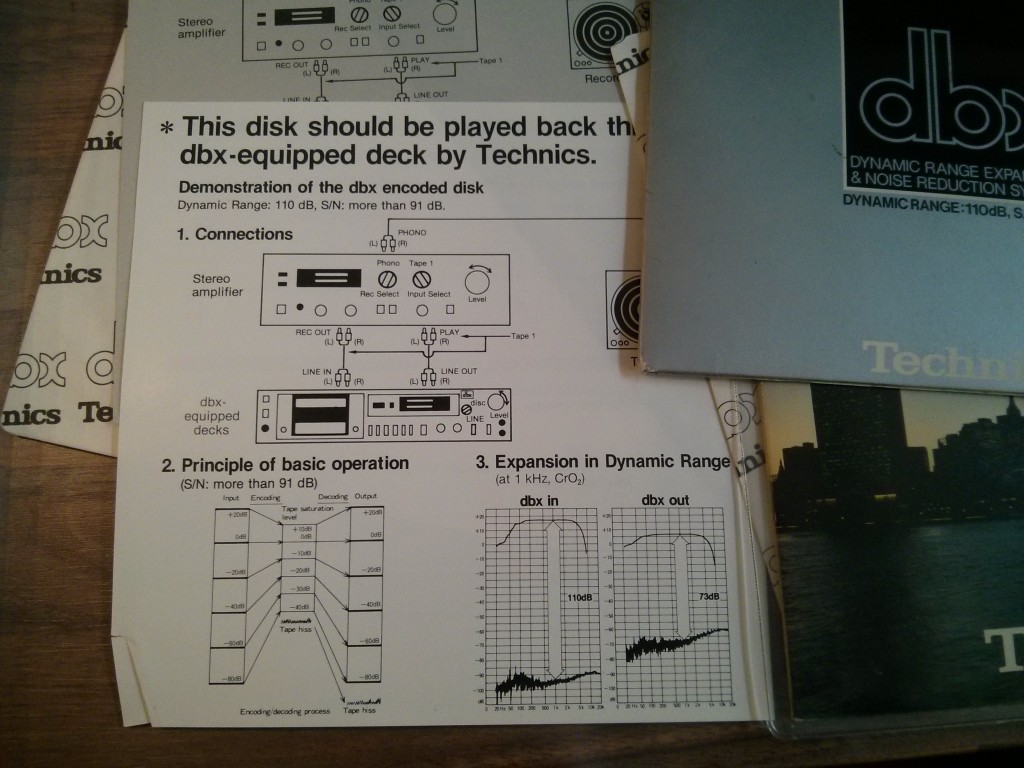The other day I received two dbx encoded 7″ singles, demonstration discs by Technics. These are supposed to have superior dynamic range and almost no noise/hiss/rumble whatsoever.
First some background:
dbx was also used on vinyl records, from 1973 until around 1982, and over 1100 albums were released with dbx encoding, which were known as dbx discs. When employed on LPs, the dbx Type-II system reduced the audibility of dust and scratches, reducing them to tiny pops and clicks (if they were audible at all) and also completely eliminated record surface noise. dbx encoded LPs had, in theory, a dynamic range of up to 120db.[3] In addition, dbx LPs were produced from only the original master tapes, with no copies being used, and pressed only on heavy, virgin vinyl. Most were released in limited quantities with premium pricing. [wikipedia][
Well, the accompanying sheet suggest that you hook your equipment up to a dbx capable (cassette) deck, but I didn’t. Instead, I connected my dbx model 150 unit. Better!
On all 4 sides was music, mostly jazz-like. On side A of the first disc was an impressive dynamic piece with flute and big drums. I was very surprised when the drums reached full power! And they go very loud! It is an extremely dynamic experience. Even on headphones.
Clicks and pops and other vinyl noise are so unnoticeable, the whole listening experience is very, very enjoyable. Even the dropping of the needle was hardly audible. Now, I need to find me some other dbx encoded discs!
edit: while writing this down, I’m thinking about what would happen if I record this on a tapedeck with dbx encoding.
Or better: skip the decode and encode step, and record the disc as-it-is on tape, and the play it back through my dbx unit….interesting experiment. I should try that some time.
-Philip




I did actually try recording a dbx LP undecoded onto a cassette and decoded the tape on playback. It worked well as long as good blank ( hi bias or metal) cassettes were used. I worked at a radio station where we used dbx type2 on carts for music, liners, spots, jingles, etc for on air playback. I took a few of those carts and recorded them undecoded onto cassettes. I would then play them back on my home cassette with an outboard dbx type 2 unit and dumped them into my DAT machine. Some of the carts had dropouts and of course dbx exaggerated them. Overall they sounded pretty good.
I also devoted dbx type 1 encoded tapes on my cassette deck and external unit and they sounded useable.
I started collecting dbx vinyl records a few years ago and now have about 100. I used both unbalanced and balanced dbx decoder playback, and the listening effect was great! There is little information in this regard, and I hope to communicate with dbx ethylene record users.
I only have 2 45 rpm singles in dbx
DBX 150 is Type I noise reduction. For DBX Disc you need Type II decoder (like 12,122,124, 22, 222, 224, nx40)
I think you are right.
-Philip